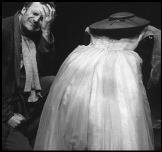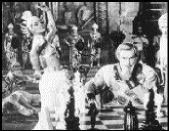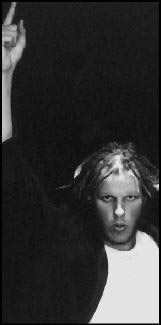YOU MAY NEVER UNDERSTAND us nor our mostly male obsession with hobbits and orcs, our writing “GO GO GANDALF” in elvish script or naughty words in dwarvic runes, our imaginary adventures through the hills of Eriador. Our debates over whether Middle-Earth is spherical or saucer-shaped like Eddas of Icelandic myth may puzzle you. That’s OK. Just don’t confuse us with those pathetic souls who collect trinkets from Star Wars, Pok魯n, or Harry Potter. Star Trek? Puh-lease! How can the Klingon language compete with Quenya’s 15 verb cases?
In the 35 years since Time magazine noted that “the hobbit habit seems to be almost as catching as LSD” on college campuses, J.R.R. Tolkien’s 1954-55 trilogy The Lord of the Rings has become the Radio Flyer of the publishing trade, a robust perennial that’s sold over 100 million copies to date. With typical Web hyperbole, a 1999 Amazon.com poll named LOTR the best book of the millennium. That’s hardly the “merciful oblivion” that critic Philip Toynbee predicted in 1960 for the tale of a halfling’s quest to destroy the One Ring of Sauron.
Frodo lives! Why? Because his journey represents our growth.
Tolkien (1892-1973) and his young fans seldom saw his creation the same way. The World War I veteran hated the trippy covers of the ’60s single-volume American paperback editions and blanched at allegorical interpretations. Ironically, given its embrace by the counterculture, LOTR was a highly reactionary work by a man deeply uncomfortable with the modern world. Even the early medieval settings of Tolkien’s lesser stories, like Smith of Wooton Major and Leaf by Niggle, reflect his wistfulness for the small Warwickshire village of Sarehole, where he grew up “in the Shire, in a premechanical age.”
MIDDLE-EARTH’S WARP AND WEFT was the Oxford philologist’s lifelong devotion to old Scandinavian and Teutonic languages and myths. “For Tolkien,” W.H. Auden explained, “North is a sacred direction.” Tolkien amiably resisted all literary suggestions from his fellow Inklings—the chummy club of Oxford writers that included C.S. Lewis—to whom he read the latest bit of his “new Hobbit” from rumpled scraps pulled from his tweeds. (What has it got in its pocketses?) His Lord prelude, The Hobbit, came out in ’37, and for the next 13 years, many shadowed by war, he composed LOTR. Said Lewis of Tolkien’s atavistic stubbornness, “You might as well try to influence a bandersnatch.”
Yet Edmund Wilson’s stinging 1956 assessment that LOTR was “a children’s book which has somehow got out of hand” isn’t wrong. Fellowship begins, as a children’s book might, with a birthday party. But while you start reading Winnie-the-Pooh, you end up immersed in Beowulf. Through an adventure of reconstructed mythos that steals from old Norse legend and swells to heroic proportions, Tolkien beckons you into the dank dream of an obscure linguist, flailing in the guttural sounds of the orcs’ Black Speech (“Ash nazg durbatulk“) or riveted by the faux ancient beauty of a-lalla-lalla-rumba-kamanda-lind-or-burm뼯I>, the Entish word for “hill.”
The sheer accomplishment of completing Lord’s 1,400-odd pages—plus another 150 of appendices on history, language, and lineage—leaves some impressionable teen readers stranded in the wrong era, one perpetuated in the dormitory laundry room for late-night games of Dungeons and Dragons. But most, like Frodo and Joseph Campbell’s archetypal heroes, eventually discover a world far larger and richer than their pot-hazed collegiate shire.
By sharing his fantasy, Tolkien deliberately carries his young readers into adulthood—or at least the sort of rueful, backward-looking maturity envisioned by an eccentric scholar who saw no worthy literature after Chaucer. The often overlooked challenge is—while never losing sight of the past—to find the future path to growing up, then echo the ring bearer’s words at Rivendell: “I will take [it], though I do not know the way.”








